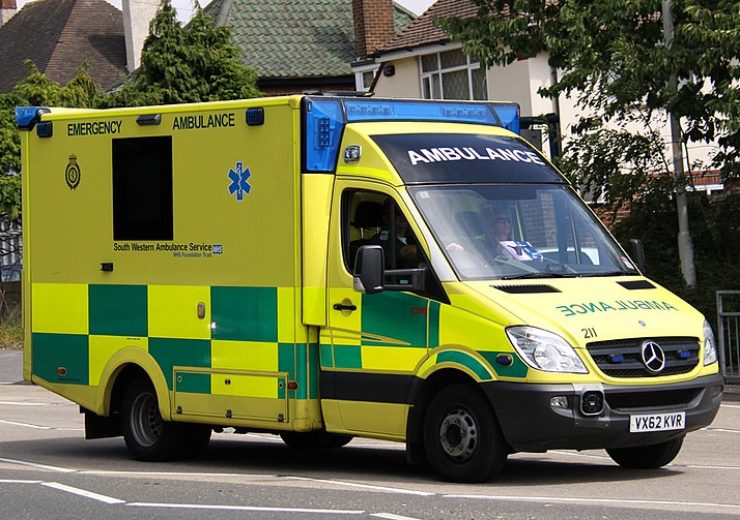Telecoms giant O2 and mobile technology manufacturer Samsung have teamed-up to trial new 5G technology to power a "smart ambulance" service for the NHS

Connected ambulance services could reduce A&E waiting times (Credit: John Rumsey/Wikimedia Commons)
A new project is exploring the use of 5G connectivity in ambulances to help paramedics diagnose and treat patients while on the move.
The upgraded “smart ambulances” will be fitted with video-communication, monitoring and consultation technology allowing doctors to remotely advise paramedics treating patients at the scene or in transit.
It is hoped that the 5G ambulances will improve the speed of treatment, reducing the number of patients taken to hospital and relieving strain on NHS resources.
Telecommunications company O2, which is providing the 5G capabilities for the ambulances, says the introduction of next-generation connectivity could free-up 1.1 million hours per year for the NHS.
Derek McManus, COO at O2 said: “It’s no secret there is increasing pressure on our health services.
“Healthcare is one of the areas set to benefit most from 5G technology, with faster, more effective treatment, and significant efficiency savings.
“That’s why we’re supporting the Smart Ambulance trials as part of the AutoAir 5G project to accelerate the adoption of connected and self-driving technology and unlock the benefits of 5G for communities and businesses alike.”
The additional speed of communication — which is up to 100 times faster than a 4G network — will allow for communication between paramedics and remote consultants via high-definition video.
The Smart ambulances will also be equipped with mobile devices from Samsung, data collection applications from Launchcloud and communication technology from medtech start-up Visionable.
5G smart ambulance trials
Trials of the 5G ambulance are set to begin at Millbrook Proving Ground in Bedfordshire later this month.
The tests will simulate emergency call-outs where paramedics and consultants can test the data-collection and communications equipment in real-life scenarios.

Lynda Sibson, telemedicine manager for the East of England Stroke Telemedicine Partnership said: “When someone has a stroke, every minute counts.
“We have been successfully working with Visionable to bring critical stroke care to patients wherever they are, bringing life-saving treatment and diagnosis to thousands of people across the East of England.
“Extending this type of care into ‘smart ambulances’ is an exciting next step in critical and pre-hospital emergency care.
“Being able to bring experts to patients regardless of their location will help save lives, while reducing some of the strain on clinicians and the NHS.”
These latest tests follow initial trials of the technology by University Hospital Birmingham.
During the West Midlands trials, cameras were installed in ambulances and were able to broadcast live over a 5G network.
This allowed a hospital-based clinician to successfully guide a paramedic in performing an ultrasound scan on-board an ambulance, while en-route to the accident and emergency department.


